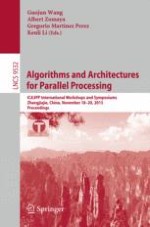2015 | OriginalPaper | Buchkapitel
Predicting Severity of Software Vulnerability Based on Grey System Theory
verfasst von : Jinkun Geng, Daren Ye, Ping Luo
Erschienen in: Algorithms and Architectures for Parallel Processing
Aktivieren Sie unsere intelligente Suche, um passende Fachinhalte oder Patente zu finden.
Wählen Sie Textabschnitte aus um mit Künstlicher Intelligenz passenden Patente zu finden. powered by
Markieren Sie Textabschnitte, um KI-gestützt weitere passende Inhalte zu finden. powered by
